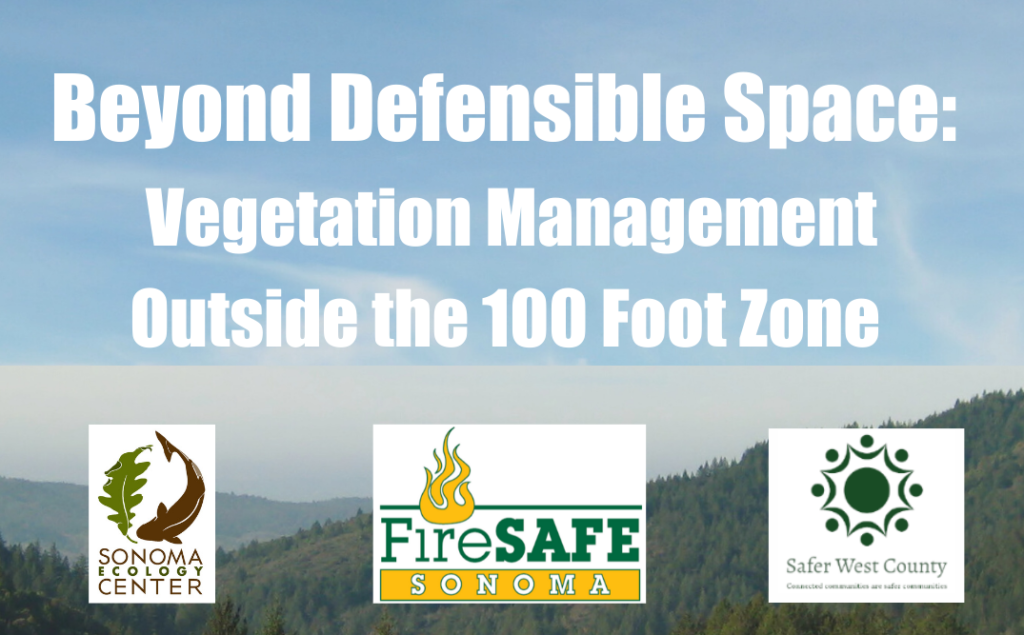
Wildfire preparedness at the county and state level often focus on defensible space and home hardening… and for good reason! Both are critical strategies when it comes to saving lives, protecting homes, and slowing the spread of wildfire. Defensible space is like a buffer area between a home or structure and the surrounding grass, trees, shrubs, or wildland vegetation — often delineated by a 100-foot perimeter.
In this presentation, Brock Dolman takes us beyond the “100-foot zone” to consider how land owners and managers across Sonoma County can create fire resiliency at a landscape-scale. As land tenders within the fire ecology of California, can we build resiliency from an ecologically literate foundation? Brock challenges us to couple wildfire management with the complementary goals of clean watersheds, healthy wildlife, and thriving holistic ecosystems.
This webinar was presented on December 9th, 2021 by Sonoma Ecology Center and Fire Safe Sonoma and is Part Two of the Resilient Landscapes Coalition webinar series. Part One focused on fire hardening the 100′ zone directly surrounding homes and buildings, and this webinar focuses on the forests and wild areas beyond.

For your convenience, we’ve extracted Brock’s 33 minute presentation in the YouTube video clip above, but we highly recommend watching the full 2 hour webinar linked below if you have time! It contains an in-depth discussion of ecological principals, historical fire trends, and economic factors, in addition to specific vegetation management techniques and considerations.
- Introduction and Ecological Principals by Ellie Insley of the Sonoma Ecology Center
- Wildfire and Vegetation in Forestlands by Mike Jones PhD, UC Cooperative Extension Forest Advisor (at minute 18)
- Mending the Wild: Regenerative Land Management by Brock Dolman, co-founder Occidental Arts & Ecology Center and WATER Institute (at minute 51)
- Q & A (at minute 1:24)
Watch the full webinar here:







